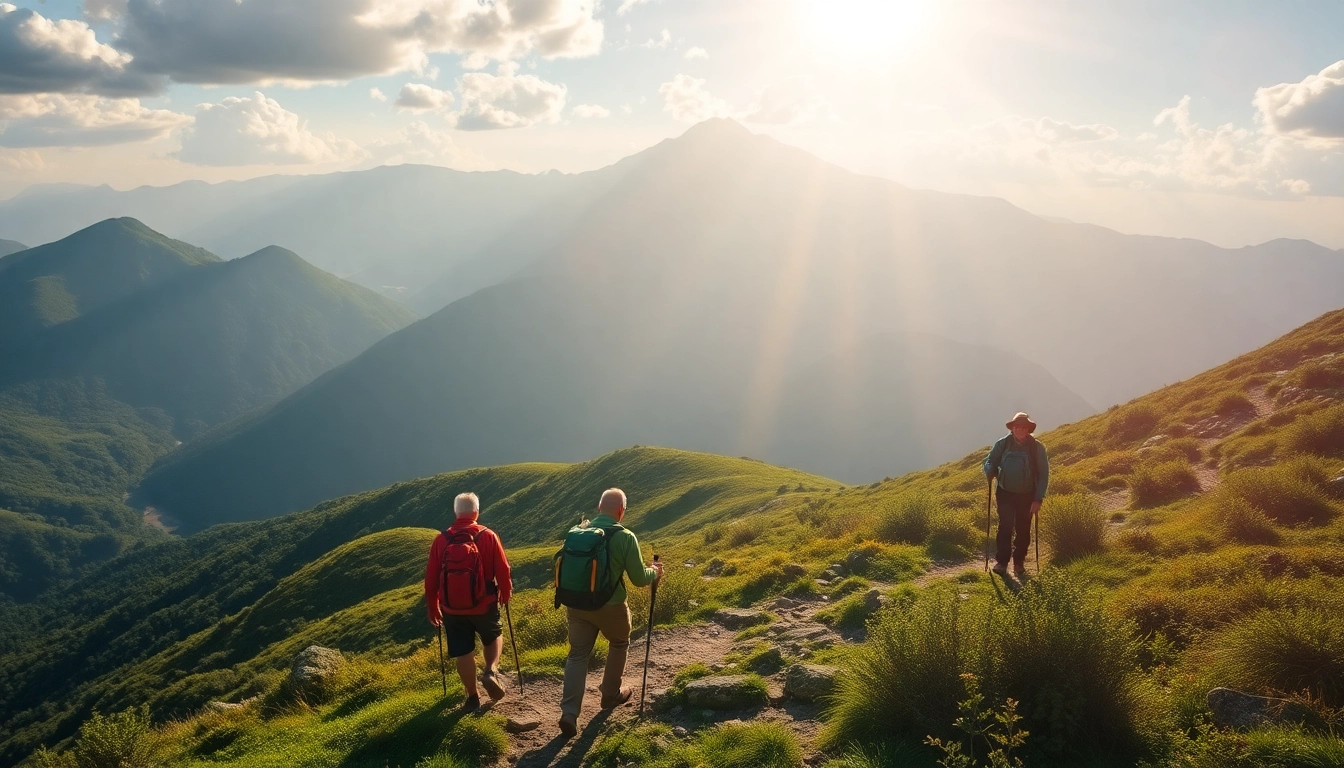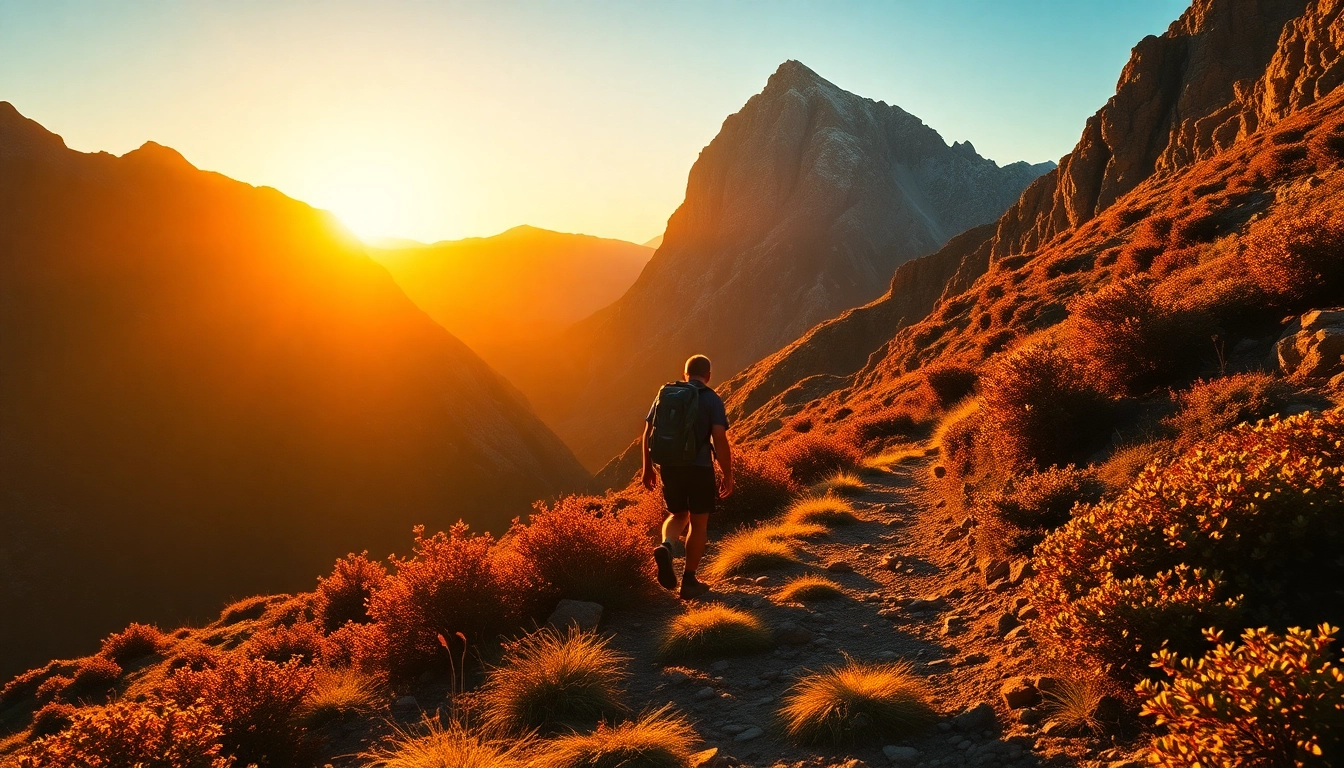Understanding Guided Treks: What Makes Them Unique
Definition and Key Features of a Guided Trek
A guided trek is an organized journey on foot, often through rugged or remote natural landscapes, led by a knowledgeable guide who manages the route, provides insights, and ensures safety. Unlike independent hiking or backpacking, guided treks offer a structured experience where the guide’s expertise enhances the adventure, making it accessible and enjoyable for participants of varying skill levels.
At its core, a guided trek combines exploration, education, and adventure. The key features include expert leadership, logistical coordination, cultural and environmental interpretation, safety protocols, and often, included accommodations or camping arrangements. Guides are typically well-versed in navigation, first aid, local history, flora and fauna, and cultural customs, providing participants with meaningful context and enriching the overall experience.
For those interested in exploring Indonesia’s diverse landscapes, a guided trek offers an excellent way to discover hidden gems while ensuring safety and logistical ease. To learn more about such expeditions, visit guided trek, where authentic adventure opportunities are waiting.
Benefits of Joining a Guided Trek
Participating in a guided trek presents numerous advantages, especially for travelers seeking an immersive yet managed experience. Key benefits include:
- Expertise and Safety: Guides possess deep knowledge about the terrain, weather conditions, and safety protocols, significantly reducing risks.
- Cultural and Environmental Insights: Guides share local stories, traditions, and ecological data, transforming a physical journey into an educational adventure.
- Logistical Convenience: Arranged accommodations, permits, transportation, and meals are typically handled, allowing trekkers to focus solely on the experience.
- Community and Networking: Small-group settings foster camaraderie, cultural exchange, and valuable connections among travelers.
- Customized Experiences: Guided treks often include options tailored to fitness levels, interests, and special requirements, enhancing inclusivity.
The benefits are especially evident in remote or challenging environments, such as Indonesia’s volcanic landscapes, dense jungles, and pristine coastlines, where local knowledge is vital for a safe and enriching journey.
Common Destinations for Guided Treks in Indonesia
Indonesia, with its vast archipelago of over 17,000 islands, offers some of the most spectacular trekking destinations worldwide. Guided treks in Indonesia are tailored to showcase its diverse ecosystems, cultural richness, and natural beauty. Notable destinations include:
- Mount Rinjani, Lombok: Indonesia’s second-highest volcano backdrop, offering multi-day treks with panoramic crater views, waterfalls, and lakes. Guided expeditions include camp setup, acclimatization, and cultural visits to local Sasak villages.
- Bali’s Sekumpul and Mount Agung: Trekking in Bali combines spiritual cultural visits with scenic mountain routes, waterfalls, and lush rice terraces.
- Sumatra’s Gunung Leuser National Park: Opportunities for rainforest trekking, wildlife spotting (including orangutans), and exploring tropical biodiversity.
- Komodo Islands: Marine and terrestrial adventures featuring guided hikes on rugged terrain with views of Komodo dragons and coral reef diving.
- Ijen Volcano, Java: Night treks to witness the surreal blue flames and sulfur lakes, coupled with a visit to nearby traditional spice markets.
Each location provides unique insights into local culture and ecosystems, making guided treks an ideal way to fully appreciate Indonesia’s natural and cultural treasures.
Planning Your Guided Trek: Tips and Best Practices
Choosing the Right Guided Trek for Your Fitness Level
Selecting an appropriate guided trek depends heavily on your physical fitness, experience, and personal interests. Start by assessing the terrain difficulty—whether it involves steep ascents, high altitudes, or long distances—and match it to your capabilities. Reputable providers offer detailed descriptions of each trek’s difficulty level, duration, and required fitness, enabling informed decisions.
For beginners or those with limited hiking experience, look for treks labeled as “easy” or “moderate” with manageable daily distances. Expert guides can adapt routes or pace to accommodate less experienced trekkers. Conversely, seasoned hikers may opt for challenging routes that involve technical skills, higher elevations, or extended multi-day adventures.
Engaging with local operators or consulting reviews can help confirm that your chosen trek aligns with your fitness and experience. Remember, safety is paramount—not pushing beyond your limits ensures an enjoyable and injury-free experience.
Preparing Equipment and Essentials
Proper preparation can significantly enhance your trekking experience. Essential gear includes a sturdy pair of hiking boots, weather-appropriate clothing, a comfortable backpack, hydration systems, and sun protection. Additional items like trekking poles, headlamps, a first aid kit, and insect repellent are recommended, especially in tropical climates.
When trekking in Indonesia’s diverse environments, be prepared for sudden weather changes—carry rain gear and layered clothing to adapt easily. Lightweight, quick-dry fabrics, and insect-proof clothing can improve comfort during humid jungle treks or mountain excursions.
Most guided tours provide detailed equipment lists tailored to their specific routes, but double-check to avoid missing critical items. Ensuring your gear is in good condition and familiarizing yourself with its setup before trekking are practical steps to prevent inconveniences.
Booking and Communicating with Your Guide
Effective communication before and during your trek enhances your safety and enjoyment. When booking, clarify logistical details, and preferences, and confirm what is included—meals, permits, transportation, and accommodations. Ask about the guide’s experience, language skills, and local knowledge.
Establishing contact with your guide ahead of time allows you to address any health concerns, dietary restrictions, or special needs. During the trek, maintain open dialogue; sharing feedback about your pace and comfort enhances the experience.
Many operators now offer digital communication channels, ensuring seamless coordination. Clear communication builds trust and ensures that you and your guide are aligned throughout the journey.
Authentic Experiences: What to Expect on a Guided Trek
Scenic Landscapes and Cultural Insights
Guided treks in Indonesia promise breathtaking sights—from volcanic crater lakes to cascading waterfalls and verdant rice terraces. The scenery varies dramatically depending on the region, allowing trekkers to witness the country’s rich biodiversity and geological marvels firsthand.
Beyond natural beauty, guides often incorporate cultural elements—visiting local villages, experiencing traditional ceremonies, and tasting regional cuisine. These interactions provide a deeper understanding of Indonesian tribes, customs, and history, making each trek more meaningful.
Safety Measures and Local Wildlife
Safety is a core component of guided treks. Experienced guides monitor weather conditions, navigate challenging terrains, and manage emergency responses. They also inform trekkers about local wildlife, including potentially dangerous species such as snakes, insects, or large mammals, advising on precautionary measures.
In Indonesia’s jungles and mountains, wildlife encounters are common, but respectful observation often suffices to enjoy nature safely. Guides facilitate these interactions responsibly, promoting conservation and awareness.
Interaction with Local Guides and Communities
One of the most enriching aspects of guided treks is engaging with local guides and communities. Guides act as cultural ambassadors, sharing stories, traditions, and folklore that breathe life into the landscape.
Many treks include visits to indigenous villages, schools, or craft markets, fostering cross-cultural understanding. These interactions promote sustainable tourism and provide economic benefits to local communities, making the trekking experience socially rewarding.
Maximizing Your Trekking Experience: Tips for Success
Embracing the Adventure and Staying Flexible
Flexibility and a positive attitude are crucial for a memorable trekking experience. Conditions can change unexpectedly—weather, trail closures, or health issues—requiring adaptability. Embrace the unpredictability as part of the adventure, and work closely with your guide to adjust plans accordingly.
Remember, maintaining an open mind allows you to see unexpected sights, meet new friends, and derive greater personal growth from the journey.
Respecting Nature and Local Cultures
Responsible trekking includes respecting the environment by practicing Leave No Trace principles—disposing of waste properly, avoiding damage to flora and fauna, and sticking to designated trails. Equally important is honoring local customs and cultural sensitivities, including dressing modestly, asking permission before photography, and supporting local artisans and businesses.
Respectful engagement preserves the authenticity of your experience and contributes to sustainable tourism.
Capturing Memories and Post-Trek Care
Document your journey with photos and journaling, but stay present and mindful, savoring each moment. After the trek, engage in self-care—rest, rehydrate, and reflect on your experiences. Sharing your stories and feedback with the tour provider can help improve future treks and assist other travelers.
Maintaining good physical health post-trek ensures you can continue exploring, while preserving the memories keeps the sense of achievement alive.
Performance Metrics and Feedback: Improving Your Next Guided Trek
Evaluating Your Overall Experience
After completing your guided trek, assess key aspects such as guide professionalism, route safety, cultural and environmental engagement, logistical organization, and personal comfort. Honest evaluations help providers enhance their services and guide future improvements.
Reflection on what worked well and what could be better provides valuable insights for both individual travelers and operators.
Sharing Feedback with Tour Providers
Constructive feedback via surveys, reviews, or direct communication is vital for maintaining high standards. Highlighting positive experiences encourages providers to continue good practices, while pointing out challenges helps address gaps.
For a more personalized touch, sharing photos and stories adds credibility and assists future travelers in making informed decisions.
Planning Future Guided Trekking Adventures
Use your experience to plan subsequent trips—exploring new destinations, trying different routes, or engaging in specialized treks such as bird-watching or cultural immersion. Research new providers, consider varying difficulty levels, and incorporate lessons learned about gear, physical preparedness, and cultural sensitivities.
Staying engaged with trekking communities and forums can offer ongoing inspiration and valuable tips.

